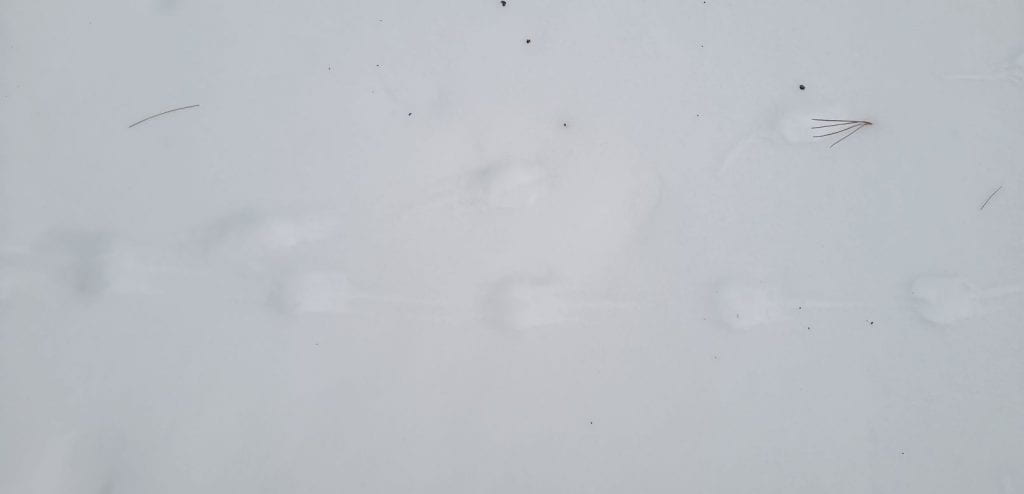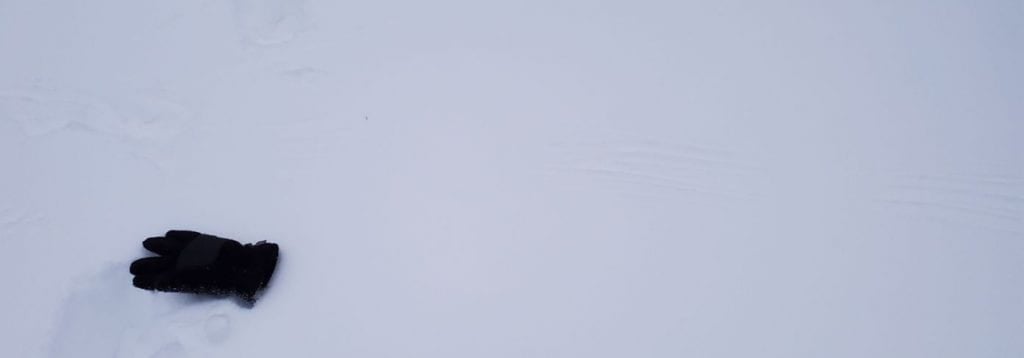Your success tracking animals in the snow depends a lot on the condition of the snow. Because the weather and timing were excellent, I led a pop-up tracking workshop this past Tuesday, Feb. 1st at First Parish Northboro. The snow conditions were good: dry but not powdery, little to no melting, and enough ‘tracking nights’ between the snowfall and our program to give enough time for animals to move around. Our only challenge was the depth of the snow – deep and dry enough to make larger animal tracking more challenging.
Nonetheless, we made some great discoveries! Staying close to the buildings at first, we explored and found the tracks of a number of small animals – likely mice – whose tiny tails can be seen dragging along between their tracks:

We then moved into the cemetery where we saw evidence of grey squirrels. Lots and lots of grey squirrels. The snow was deep enough that any larger animals moving through would probably stick to the plowed roads that border the inside of the cemetery.
We then made our way to the front lawn where we saw much larger tracks in a very different type of grouping:

The trail of this animal, which we narrowed down to being a coyote, crossed the entire lawn in this loping/galloping pattern. When we measured the distance between this animal’s groups of tracks it covered nearly 8 feet between groupings as it sped across the lawn.
Our final, and most exciting find was evidence of a raptor – owl or hawk – that swooped down onto the lawn to catch one of the many small animals we saw evidence of throughout our program:

To the right of my glove in the center and right of the above picture, you can see the faint streaks of the bird’s tail as it came in (moving toward the left), feet extended to grab its meal. Above and to the left of the glove you can see the impact of where the bird touched down, and below that, streaks where its left wing brushed the snow as it took back off. Unfortunately, the overcast afternoon made the images difficult to see in photos.
When I teach tracking, I do so as a group exercise, where we make a practice of observing as much as we can collectively, before trying to firmly identify our finds. Instead of giving straight answers, I engage in “Coyote Teaching“, a method of inquiry-based exploration that helps participants build their own skills.
Animal tracking is a perfect exercise in mindfulness. My next article will present a way for you to try your own mindful tracking session without any tracking experience necessary.

